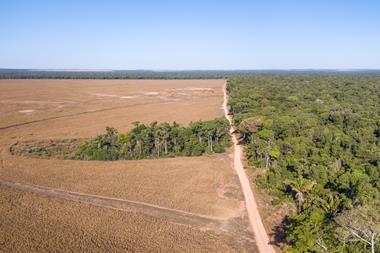How many British consumers realise that supply of Colombia’s famous Arabica coffee is at risk from climate change?
I noticed at last month’s Planet Under Pressure conference in London just how popular Colombian coffee is and rest assured, Colombia’s National Coffee Growers Federation is working to keep coffee production viable and the quality the best in the world.
But climate change is taking a toll and could change the way we produce coffee, as well as the cocoa, sugar cane and fruits that we export. That’s why I’m working with others to try and make Colombia’s coffee industry, and the small farmers behind it, more resilient to climate change.
Colombia is the land of coffee. More than half a million families produce coffee, almost all on small farm plots. No other economic activity generates the income and social development that coffee does in rural areas.
Coffee growing is a family-run operation, borne of hard work, passion and dedication. The crop is cultivated in geographically diverse areas, notably the Andean Cordillera at altitudes from 1,200m to 1,800m - the perfect environment for mild beans.
In the past, farmers have depended on a predictable climate to make a living. They cannot do that any longer. In the winter of 2010-11, heavy rainfall associated with La Niña swelled the Magdalena River, destroying crops, infrastructure and homes across the river basin.
This affected more than 1.9 million Colombians and wiped out more than 280,000 homes. It also led to a 12% fall in Colombia’s 2011 coffee production, a potent warning of things to come.
The Inter-governmental Panel on Climate Change predicts more climate extremes in Latin America with more frequent heavy rain likely between now and 2100. Average temperatures are also expected to rise. Coffee plants are very vulnerable in a changing climate and there’s a real question of whether our mountains will retain their essential cool, moist conditions.
Scientists and policymakers agree on a goal of not going beyond 2C of global warming, considered “safe” for maintaining the earth’s systems. But for coffee farmers this is far from safe - 2C is the equivalent of having to move 450m higher up the mountainside to find suitable growing conditions. There is less land higher up and much of it is protected to ensure water supplies for the large cities.
Federation initiatives include conserving healthy environments in river basins, planting shade trees in coffee farms, and developing new varieties to improve quality while increasing disease resistance. They are also trying to make plants more adaptable to temperature rises and changes in water and nutrient availability.
My organisation, the Climate and Development Knowledge Network (CDKN), is working with other key players to assess the vulnerability of small farmers and do what we can to help. We must work on production planning, environmental protection, new technologies and household economic strategies to help farmers plan for a secure future.
Sign in to comment on this article
Not logged in before? Register for FREE guest access today.
You will be able to:
- Read more stories
- Receive daily newsletters
- Comment on stories
Advert



















No comments yet